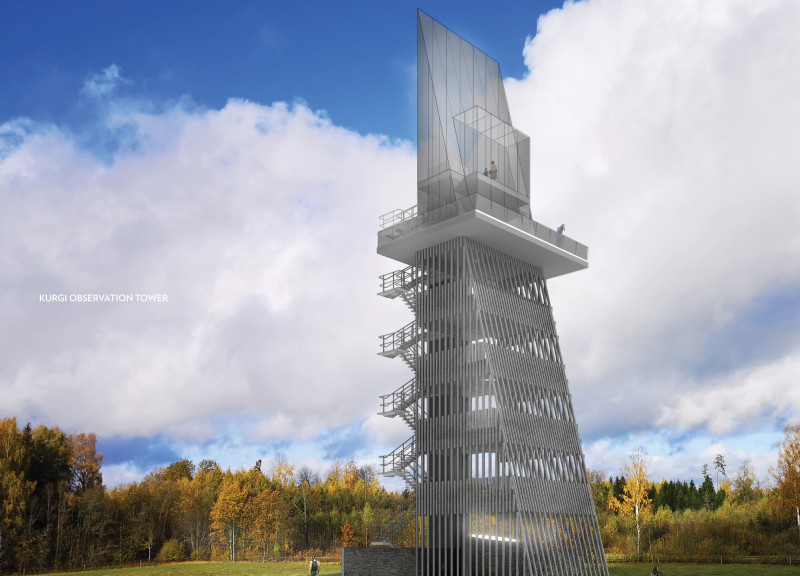5 key facts about this project
The Kurgi Observation Tower is located in Latvia and is designed to enhance the viewing experience of its natural surroundings. The tower consists of seven levels that taper as they reach higher elevations, starting from a base of 8 meters by 9 meters. The design focuses on verticality and how it interacts with the environment, creating a landmark that encourages visitors to appreciate the views around them.
Design and Configuration
The overall layout promotes a strong connection between the indoor spaces and the outdoors. Vertical walls and a wrap-around deck, which is 2 meters wide, help merge these areas. The top deck features a glass lantern that allows natural light to flood the space while offering a place for gatherings, thus emphasizing openness and a link to nature.
Materiality and Texture
A distinctive feature of the tower is the textured prism made from logs of varying thicknesses. This design adds visual interest by creating patterns of light and shadow. The central core of the tower, constructed of steel and wood, provides stability and serves as an important design element that combines functional needs with visual appeal.
Illumination Strategy
Lighting plays a key role in the project's overall feel. Vertical LED strips are mounted on steel rods, outlining the light well. This thoughtful illumination enhances the appearance of the building at night and ensures safe navigation. The combination of modern techniques and rough materials reflects local architectural traditions and contributes to a sense of place.
Structural Elements
The ground floor features a stone wall that contains necessary mechanical systems, providing a solid base for the structure. A vertical shaft allows light to enter while also contributing to the overall strength of the building. This design ensures that each observation level is stable and accessible for visitors.
The Kurgi Observation Tower concludes with a glass lantern at the upper deck that serves as a prominent feature, guiding visitors as they explore the heights of the tower. Its design invites a closer look at the surrounding landscape, fulfilling the project's intention of connecting people with their environment.























































